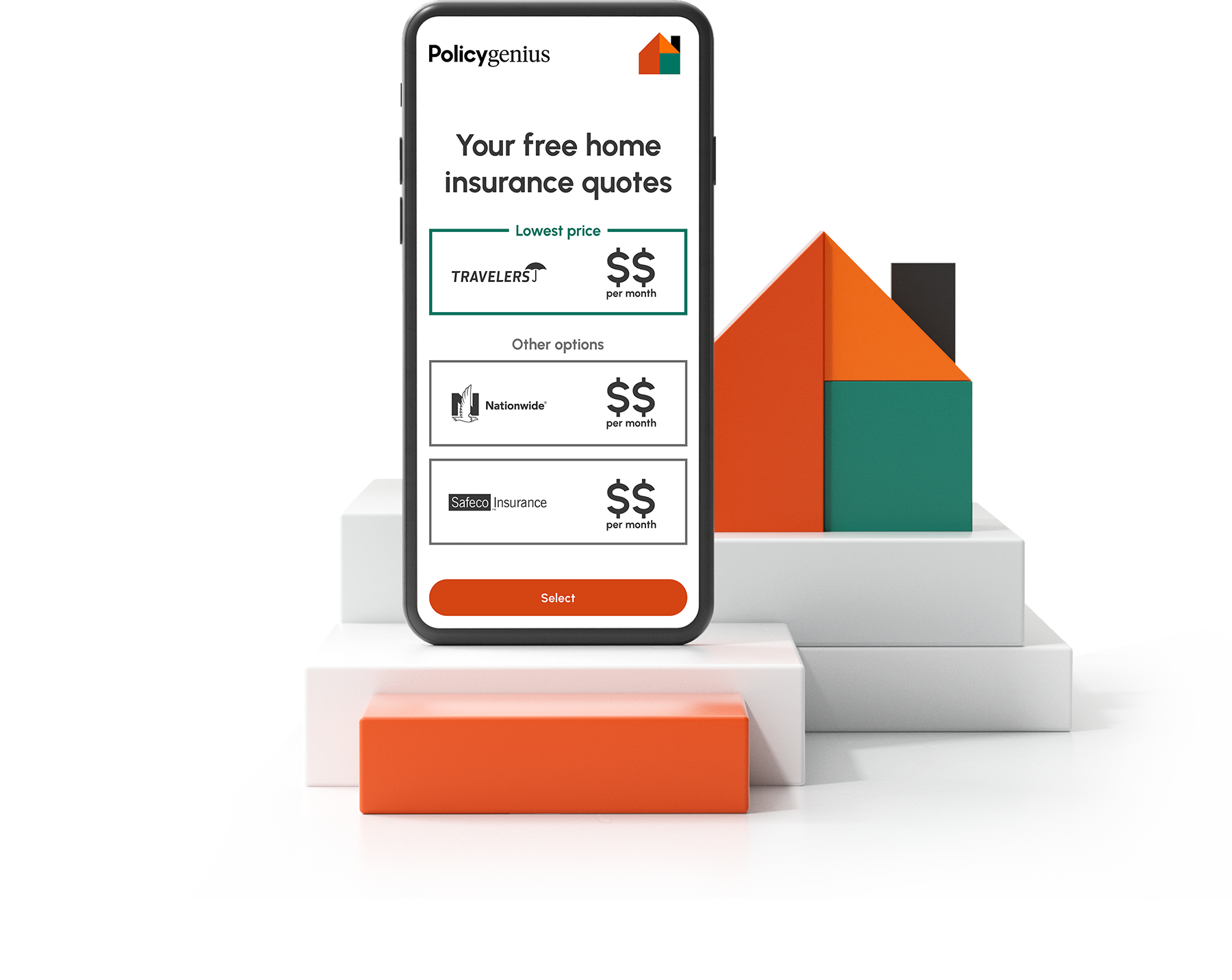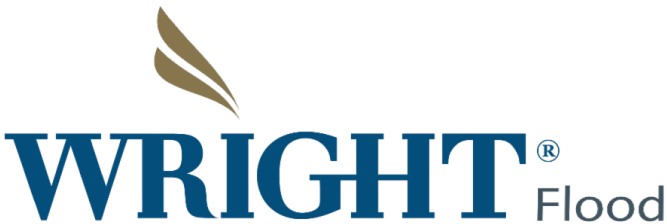The 6 best flood insurance companies of 2024
A typical homeowners insurance policy won’t cover flood damage to your home or personal belongings, which makes flood insurance a necessity for anyone who lives in a high-risk area. As climate change continues to increase the frequency and severity of flood events, it’s important to consider which companies offer the best flood insurance in the here and now.
To find the 6 best flood insurance companies of 2024, we looked at company pricing data from the National Association of Insurance Commissioners (NAIC), financial strength ratings, policy options, coverage availability, and customer experience and availability of online resources. [1] [2]
Click on the company links to jump down to learn about why they made our list of the best flood insurance companies in 2024.
Best overall: Neptune
Best for affordable rates: Wright
Best for high-value homes: Chubb
Best for NFIP coverage: Allstate
Best for excess flood insurance: Palomar
Compare flood insurance companies
*Based on a policy through the National Flood Insurance Program (NFIP) with $250,000 in building coverage and $100,000 in contents coverage. Your own rate with the NFIP will be the same regardless of whether you choose Allstate or another company that sells NFIP flood insurance.
**Kin is not rated with AM Best, however it does have an A (Exceptional) rating from Demotech, an independent rating agency.
Neptune: Best overall
Neptune’s private flood insurance option is likely the most comprehensive in our analysis, providing building coverage up to $4 million, high coverage limits for structures not attached to your home, and up to $10,000 in coverage for belongings stored in your basement — a rarity in flood insurance. That, along with nationwide availability and relatively affordable premiums make Neptune the best overall flood insurance company in our analysis.
Neptune flood insurance coverage details
Below are some of the highlights of Neptune’s main policy option:
Max building coverage: $4,000,000
Max contents coverage: $500,000
Additional structures: Up to $50,000
Temporary living expenses: Up to $10,000
Basement contents: Up to $10,000
Deductible options: $1,000 to $25,000
Wright: Best cheap flood insurance
With an average annual flood insurance premium of $470 per year, Wright offers the best cheap flood insurance of any company in our analysis. Wright’s affordable flood insurance options are mainly due to the plethora of policy options and carrier mix it offers in the ~42 states it services.
Depending on your state, you may have the option of Wright’s own proprietary flood insurance product (ResiFlood), its excess flood insurance, or standalone coverage through partnering insurers Hiscox and Chubb. While it may not always be clear who to contact in the event of a policy question or claim, one thing is clear: Wright will consistently find you the lowest rates on flood insurance.
Wright flood insurance coverage details
Below are the coverage details of four of Wright’s policy options: ResiFlood, its own residential flood insurance policy; Hiscox and Chubb, two partnering companies who offer high-value and NFIP-equivalent flood insurance through Wright, respectively; and Wright Flood, which provides excess flood insurance to supplement NFIP flood insurance policies.
Wright ResiFlood | Hiscox | Chubb | Wright Excess Flood | |
Policy type | Primary | Primary | Primary | Excess |
Dwelling | Max of $1 million | Max of $1.25 million | Max of $2 million for both dwelling & contents | Max of $1.75 million |
Personal property | 50% of dwelling limit, max $250,000 | Max of $875,000 | 70% of dwelling limit | Max of $100,000 |
Other structures | 10% of dwelling limit, max of $50,000 | 10% of dwelling limit | Not available | Not available |
Loss of use | 20% of dwelling limit, max of $50,000 | 20% of dwelling limit | Up to $5,000 (where available) | Not available |
Deductible options | $1,000 to $20,000 | $1,000 to $25,000 | $1,000 to $50,000 | Not available |
Other details | No EC or waiting period, replacement cost settlements | 7-day waiting period unless for a mortgage, no EC required | 7-day waiting period unless for a mortgage, NFIP coverage forms | Excess coverage for NFIP policies, no EC required, 30-day waiting period unless for mortgage |
Chubb: Best for high-value homes
Chubb’s high-value flood insurance policy includes up to $15 million in coverage for your home and belongings, coverage for additional structures and additional living expenses, and up to $15,000 in coverage for belongings stored in your basement. If your home is valued at more than $1 million and you have other property insurance needs, look no further than Chubb.
Chubb flood insurance coverage details
Below are some of the highlights of Chubb’s high-value flood insurance policy.
Max building coverage: $15,000,000 per location (building and contents)
Additional structures: 10% of total property limit
Temporary living expenses: Up to $7,500, but optional higher limits may be available
Basement contents: Up to $15,000
Deductible options: $1,000 to $50,000
Allstate: Best for NFIP coverage
Allstate is one of our top-rated companies in our study of the best homeowners insurance companies in 2024 in large part due to its high customer satisfaction ratings. So when you get NFIP flood insurance through Allstate, you can expect the same level of personalized service and claims handling.
Allstate flood insurance coverage details
If you live in a community that participates in the National Flood Insurance Program, you may be able to purchase a policy with Allstate or any other private company that participates in the NFIP’s Write-Your-Own (WYO) program. It also offers private flood insurance from National General, a subsidiary of Allstate.
Here’s a brief overview of the coverages and limits included in an NFIP flood insurance policy.
Max building coverage: $250,000
Max contents coverage: $100,000
Additional structures: Up to 10% of building coverage (for detached garages only)
Temporary living expenses: Not available with the NFIP
Basement contents: Not covered
Deductible options: $1,000 to $10,000 (separate building & contents deductibles)
Kin: Best Florida flood insurance
If you live in the Sunshine State and you’re in search of affordable flood and home insurance all rolled into one, look no further than Kin. Kin utilizes advanced underwriting and risk modeling technology to ensure your rates are based on your home’s individual risk, compared to the NFIP and competitor companies with less precise methods of assessing and rating risk. This is all to say that with Kin, Florida homeowners will never pay more than they absolutely should for flood insurance.
Kin flood insurance coverage details
Below are some of the highlights of Kin flood insurance, which it adds as an endorsement to your homeowners insurance policy.
Max building coverage: Equal to dwelling coverage limit
Max contents coverage: Equal to personal property coverage limit
Additional structures: Equal to other structures coverage limit
Temporary living expenses: Equal to loss of use coverage limit
Basement contents: Not covered
Deductible options: Home insurance deductible applies to flood loss
Palomar: Best for excess flood insurance
Palomar is one of the industry leaders in specialty and excess flood insurance coverage, writing both admitted and non-admitted flood insurance policies in 18 states. Homeowners who need an extra bit of coverage in addition to their NFIP flood insurance can get up to $5 million in buildings coverage, $1 million in personal property coverage, and temporary living expenses coverage of up to $50,000.
Palomar flood insurance coverage details
Below are some of the highlights of Palomar’s excess flood insurance policy.
Max building coverage: $5,000,000
Max contents coverage: $1,000,000
Additional structures: 10% of building coverage limit
Temporary living expenses: Up to $50,000
Basement contents: Not covered
Deductible options: Fixed deductibles as low as low as $500
Flood insurance guide
In this section, we go over what flood insurance is, when homeowners need it, how to choose the best flood insurance for your home, and the average cost of flood insurance in each state for both NFIP and private flood policies.
Scroll down or click on the links to jump further down the page.
What is flood insurance?
Flood insurance pays for damage to your home and personal belongings in the event they’re damaged during a natural flood event.
A typical homeowners insurance policy covers certain types of water damage and flooding that originates inside your home — like a plumbing accident or wind-driven rain during a storm — but it won’t cover water damage due to heavy rain, hurricane flooding, high tides, or any other causes of natural flooding.
A good rule of thumb is if the water flows in from outside, it’s likely not covered under your homeowners insurance policy.
The extent and quality of flood insurance coverage can vary substantially depending on where your home is located, the type of policy you’re covered under, and other factors.
Policies purchased through the National Flood Insurance Program generally cover your home’s structure, your belongings, and home systems and appliances, but coverage is limited for property located in basements; and there are other restrictions that can impact your reimbursement amount after a flood loss.
While it’s estimated that over 90% of flood insurance policies are provided by the NFIP, private flood insurance has become an increasingly popular alternative to the federal plan thanks to its more customizable policy options and favorable pricing for homes with minimal flood risk. [3] In 2021 alone, some states — including Texas, New Jersey, and Oklahoma — saw their total number of in-force private flood insurance policies increase by around 100% versus 2020.
Is private flood insurance better than the NFIP?
While the NFIP is federally backed and available almost everywhere in the U.S, there’s a strict limit to how much coverage you can purchase, and policies come with several restrictions around what the coverage actually pays for. Private flood insurance is less widely available than the NFIP option, but policies are more comprehensive and can often be customized to suit your specific coverage needs.
While NFIP flood insurance is sold by more than 50 private insurers that participate in its Write-Your-Own program — including companies like Allstate, GEICO, and Farmers — the NFIP underwrites the policies and determines rates, so your coverage and rates will be the same regardless of which company sells you the policy. The insurance company is responsible for servicing the policy and managing claims, so if you’re considering NFIP coverage, you’ll want to choose a company that has stellar claims satisfaction reviews.
On the other hand, private flood insurance policies generally allow for higher building coverage limits, more robust coverages, shorter waiting periods until your policy takes effect, and can often cost less depending on where you live.
Here’s a look at what you can expect with private flood insurance compared to the NFIP policy.
National Flood Insurance Program | Private flood insurance | |
|---|---|---|
Building property coverage | Max of $250,000 | Up to $15,000,000 depending on the company |
Personal property coverage | Max of $100,000 | Up to $1,000,000 depending on the company |
Additional living expenses | Not included | Often included |
Basement contents | Limited to wall fixtures, air conditioners, washer/dryers | Often covered |
Deductible | $1,000 to $10,000 | $1,000 to $50,000 |
Waiting period | 30 days | As little as 0 to 10 days |
Accepted by mortgages | Yes | Yes |
Availability | 56 states and jurisdictions | May be limited in higher-risk areas |
Learn more >> NFIP vs. private flood insurance: Which is better?
How much does flood insurance cost?
The average annual cost of flood insurance through the NFIP is $738, while private flood insurance costs around $1,074 per year, according to our 2023 analysis of flood insurance pricing data from the NAIC and FEMA. [4] [5]
But keep in mind that the NFIP and private flood insurers have completely different methods for underwriting and rating certain property types and evaluating risk. So your own rates may vary substantially depending on factors like your home's elevation, flood zone, and how much coverage you need.
Compare NFIP & private flood insurance rates in your state
Here is a state-by-state breakdown of how much private flood insurance costs on average each year compared to that of an NFIP policy.
States | Average private flood premium | Average NFIP premium | % difference for private flood |
|---|---|---|---|
Alabama | $821 | $782 | 4.9% |
Alaska | $1,281 | $766 | 67.2% |
Arizona | $505 | $680 | -25.7% |
Arkansas | $573 | $721 | -20.5% |
California | $850 | $707 | 20.2% |
Colorado | $909 | $805 | 12.9% |
Connecticut | $1,515 | $1,198 | 26.5% |
Delaware | $1,364 | $939 | 45.3% |
District of Columbia | $475 | $686 | -30.7% |
Florida | $1,439 | $785 | 83.3% |
Georgia | $1,066 | $699 | 52.6% |
Hawaii | $1,945 | $1,033 | 88.3% |
Idaho | $1,030 | $731 | 40.9% |
Illinois | $683 | $729 | -6.3% |
Indiana | $853 | $691 | 23.4% |
Iowa | $653 | $752 | -13.2% |
Kansas | $583 | $736 | -20.7% |
Kentucky | $690 | $796 | -13.3% |
Louisiana | $1,222 | $656 | 86.2% |
Maine | $1,356 | $1,065 | 27.3% |
Maryland | $770 | $755 | 1.9% |
Massachusetts | $1,454 | $883 | 64.6% |
Michigan | $787 | $753 | 4.6% |
Minnesota | $689 | $722 | -4.5% |
Mississippi | $731 | $773 | -5.5% |
Missouri | $606 | $746 | -18.7% |
Montana | $870 | $821 | 6.0% |
Nebraska | $799 | $815 | -2.0% |
Nevada | $517 | $767 | -32.6% |
New Hampshire | $1,232 | $937 | 31.5% |
New Jersey | $1,159 | $749 | 54.8% |
New Mexico | $654 | $974 | -32.8% |
New York | $1,420 | $725 | 95.8% |
North Carolina | $888 | $769 | 15.4% |
North Dakota | $589 | $699 | -15.7% |
Ohio | $704 | $732 | -3.9% |
Oklahoma | $639 | $646 | -1.0% |
Oregon | $751 | $745 | 0.8% |
Pennsylvania | $934 | $766 | 21.9% |
Rhode Island | $1,538 | $1,001 | 53.6% |
South Carolina | $1,126 | $738 | 52.5% |
South Dakota | $693 | $745 | -7.0% |
Tennessee | $632 | $693 | -8.8% |
Texas | $730 | $643 | 13.5% |
Utah | $501 | $667 | -24.8% |
Vermont | $1,568 | $731 | 114.6% |
Virginia | $885 | $815 | 8.6% |
Washington | $842 | $733 | 14.9% |
West Virginia | $819 | $721 | 13.6% |
Wisconsin | $753 | $737 | 2.1% |
Wyoming | $1,221 | $799 | 52.8% |
Our private flood insurance average was based on 2021 data for “first dollar” policies, or primary flood insurance policies — excess flood insurance data was not included in this analysis. To calculate the average annual premium in each state for both private and NAIC flood insurance policies, we divided the total written premium by the number of in-force policies.
How to choose the best flood insurance
Not all flood insurance companies or policy options are created equal. Follow these steps to compare your options and choose a policy that suits your coverage needs at the most affordable rate.
1. Determine your coverage needs
To figure out how much flood insurance coverage you need, you’ll want to get an estimate of:
The replacement cost of your home: This is the amount it would cost to rebuild your home from the ground up. Replacement cost is based on factors like your home’s square footage, build, and other factors like labor and construction costs in your area.
The value of your personal belongings: You’ll want enough personal property coverage to cover the value of your belongings inside the home, including furniture, electronics, and appliances.
If your mortgage lender requires flood insurance, they’ll likely indicate how much you need to purchase. In most cases, you’ll need at least enough to cover the value of the mortgage. But depending on factors like your home’s location, elevation, and how much coverage you need, you may want to consider more than just the minimum coverage amounts required by your lender.
2. See what options are available in your area
When looking for flood insurance in your area, you’ll likely need to decide between NFIP and private flood insurance. But there are a few particular types of private flood insurance that you should be aware of:
Standalone flood insurance: This a full flood insurance policy (similar to a standard home insurance policy) that often allows for higher coverage limits for your home and belongings and more extensive coverage options than an NFIP policy.
Excess flood insurance: Excess flood policies are purchased in addition to an NFIP policy to provide higher coverage limits for your home and belongings in the event a flood loss exceeds your NFIP coverage limits.
Flood insurance endorsement: A flood insurance endorsement is a home insurance coverage add-on that can be added to your policy for a relatively low additional premium. Though keep in mind that flood endorsements may not provide as much protection as a full standalone policy.
3. Shop around and compare quotes
Once you know your flood insurance options, be sure to compare flood insurance quotes from at least three companies through a marketplace like Policygenius.
With Policygenius, you can compare private flood insurance rates from multiple companies, including Neptune, Orchid, and Palomar, as well as NFIP rates through larger companies we offer like Allstate and Progressive.
4. Check for discounts
Once you’ve compared quotes and selected a policy, ask your insurance agent if there are any available discounts that you may be eligible for or ways to lower your policy premium. Here are a few of the most common ways to save on flood insurance:
Community-wide discounts: NFIP policyholders who live in communities enrolled in the NFIP’s Community Rating System (CRS) are eligible for flood insurance discounts of up to 45%, according to FEMA. See if you live in one of the 1,520 CRS communities in the U.S.
Elevation certificate discounts: An elevation certificate (EC) provides evidence of your home’s elevation relative to your area’s base flood elevation, which is the maximum height floodwaters can rise to during a flood event. If you recently mitigated your home’s flood risk by elevating your house or filling in your basement, an EC can provide the proof you need to get discounts on flood insurance.
Increase your flood deductible: Your flood insurance deductible is the amount you’re responsible for paying on each claim before your insurance kicks in. A high policy deductible means lower flood insurance rates, but it also means you’ll be paying more out of pocket in the event of a claim.
Once your first flood insurance payment is made, you may have a waiting period before your policy goes into effect. For NFIP flood insurance, the waiting period is around 30 days; for private flood insurance, waiting periods are anywhere from 0 to 10 days depending on whether or not you’re purchasing coverage as a requirement of your mortgage or not.









